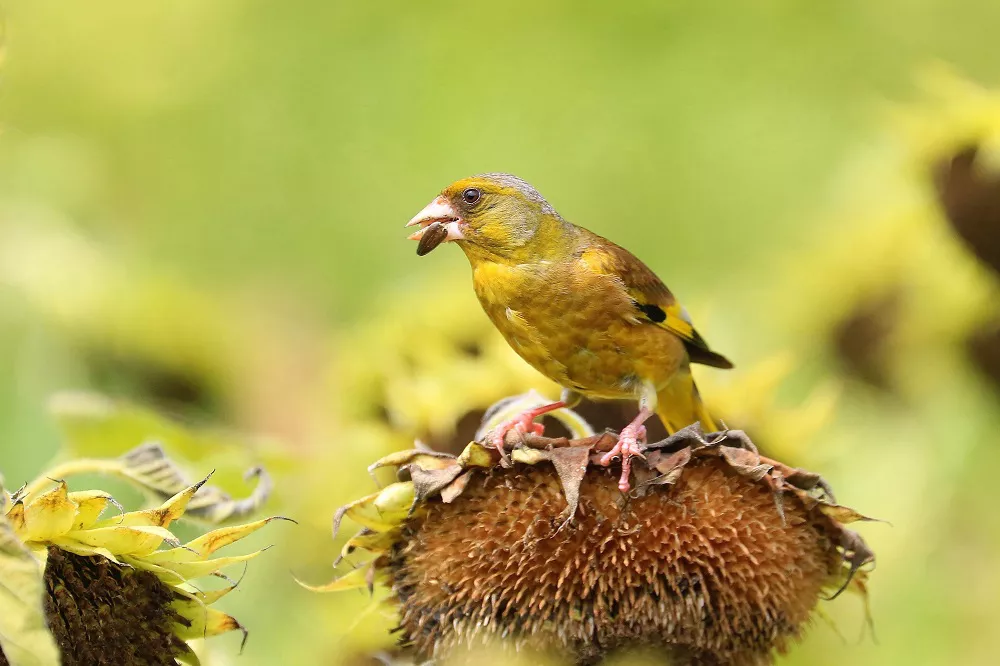The goldfinch is a small, colorful bird found throughout North America. One of the most interesting things about goldfinches is the way they build their nests. Goldfinches build their nests high up in trees and shrubs, and they are known for their unique, compact design.
Goldfinch nests are built from a variety of materials, including grass, plant fibers, and spiderwebs. The nests are shaped like a small cup and are typically around 3 inches in diameter. The cup-shaped nest is lined with soft materials, such as feathers, moss, and thistle down, which help to keep the eggs warm and protected.
One of the most distinctive features of a goldfinch nest is its location. Goldfinches build their nests in trees and shrubs, often high off the ground, in a place that is well concealed from predators. This can include dense foliage, thorny branches, or other obstacles that make it difficult for predators to reach the nest.
In addition to being well-hidden, goldfinch nests are also unique in their construction. Unlike many other bird nests, which are built using a variety of materials, goldfinch nests are primarily made from plant fibers. The birds use their sharp bills to weave the fibers together, creating a sturdy and compact structure that is well-suited for holding eggs and hatchlings.
Another interesting feature of goldfinch nests is their use of thistle down. Goldfinches are known for their love of thistle seeds, and they often use the soft, fluffy down from thistle plants to line their nests. This not only helps to keep the eggs warm and protected, but it also creates a cozy and comfortable environment for the hatchlings.
Overall, goldfinch nests are a fascinating example of avian architecture. These compact, cup-shaped nests are carefully constructed using a variety of materials, and they are strategically located to provide protection and concealment from predators. If you’re lucky enough to spot a goldfinch nest, take a moment to appreciate the beauty and ingenuity of these remarkable little birds.


 Facebook
Facebook  Instagram
Instagram  Youtube
Youtube 